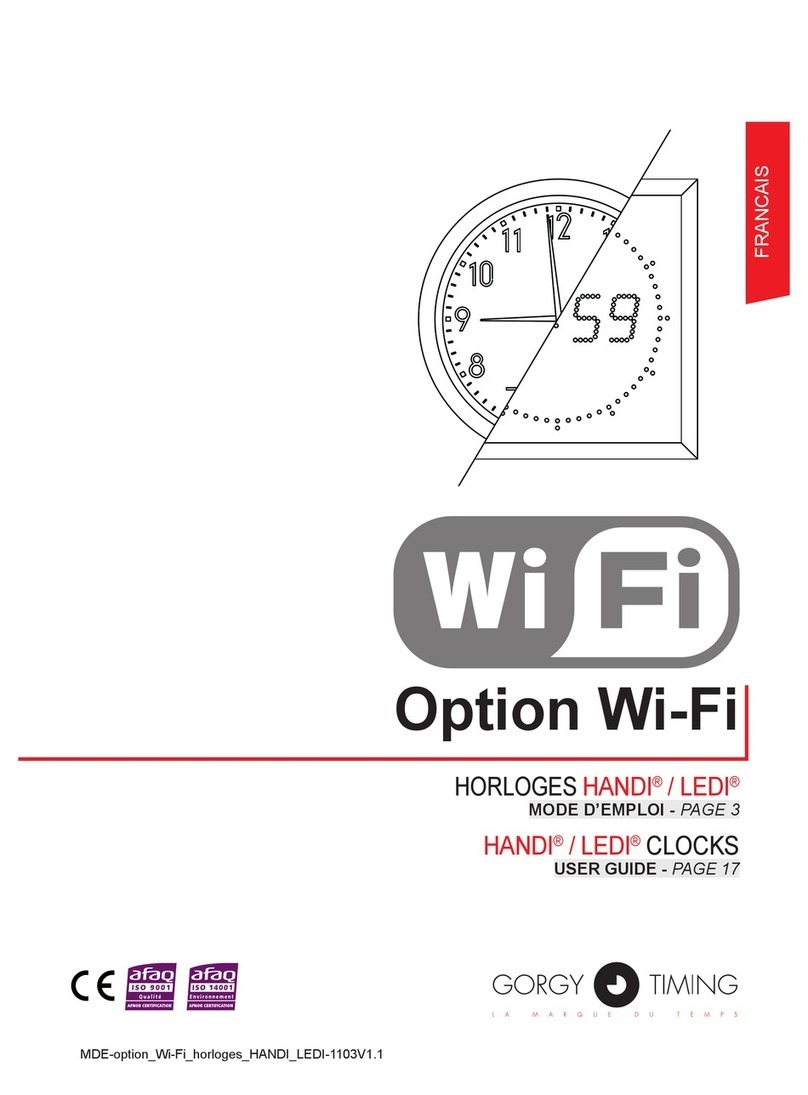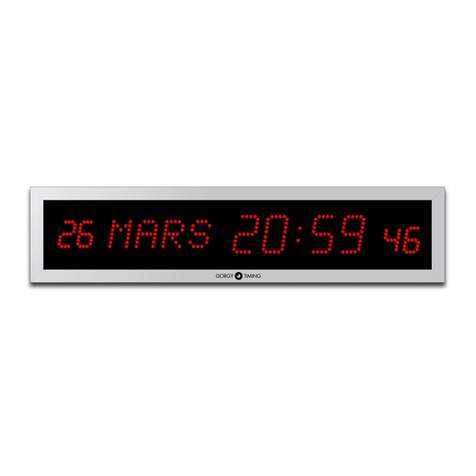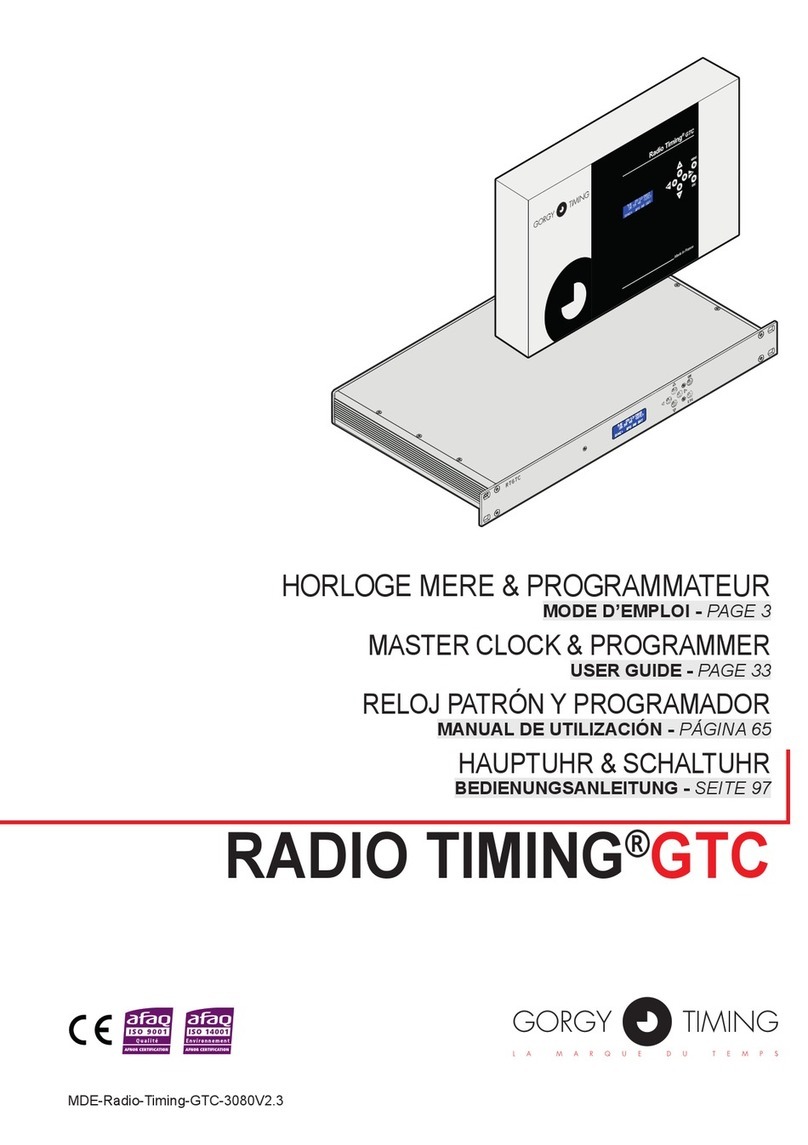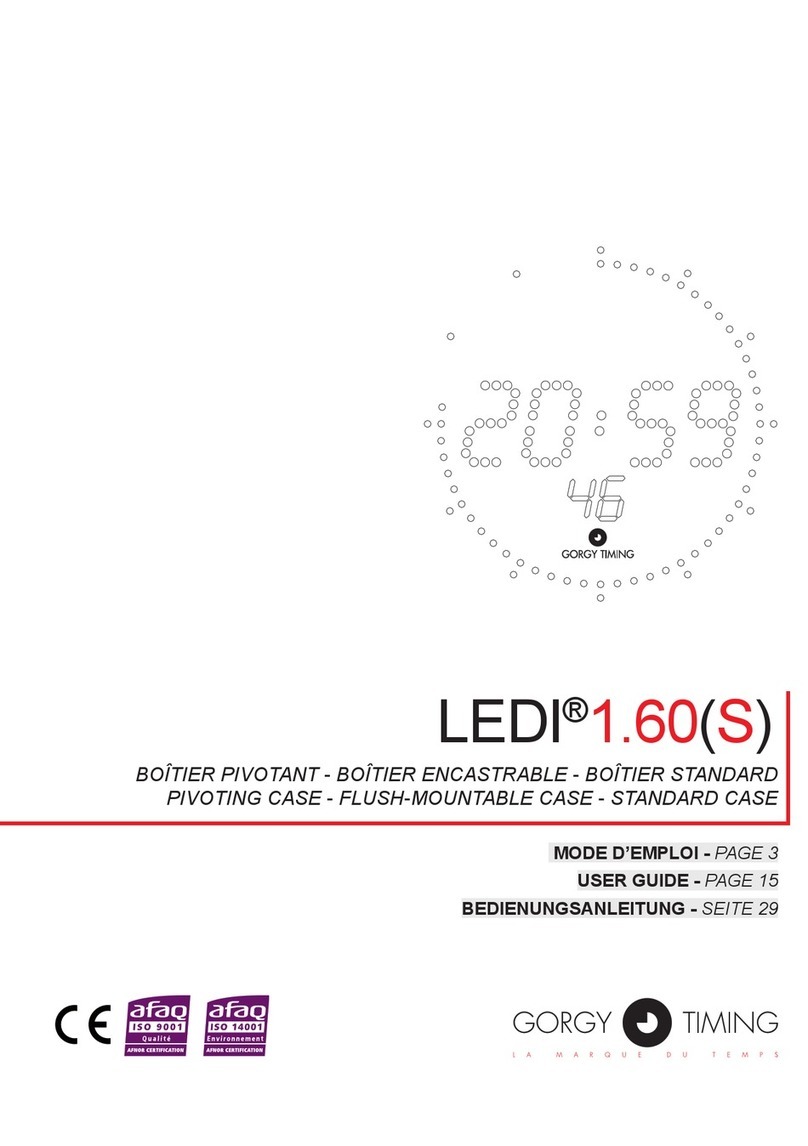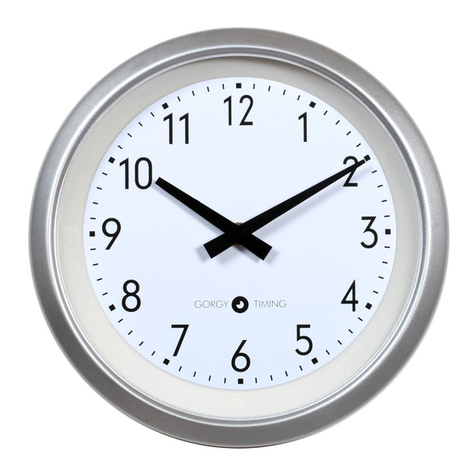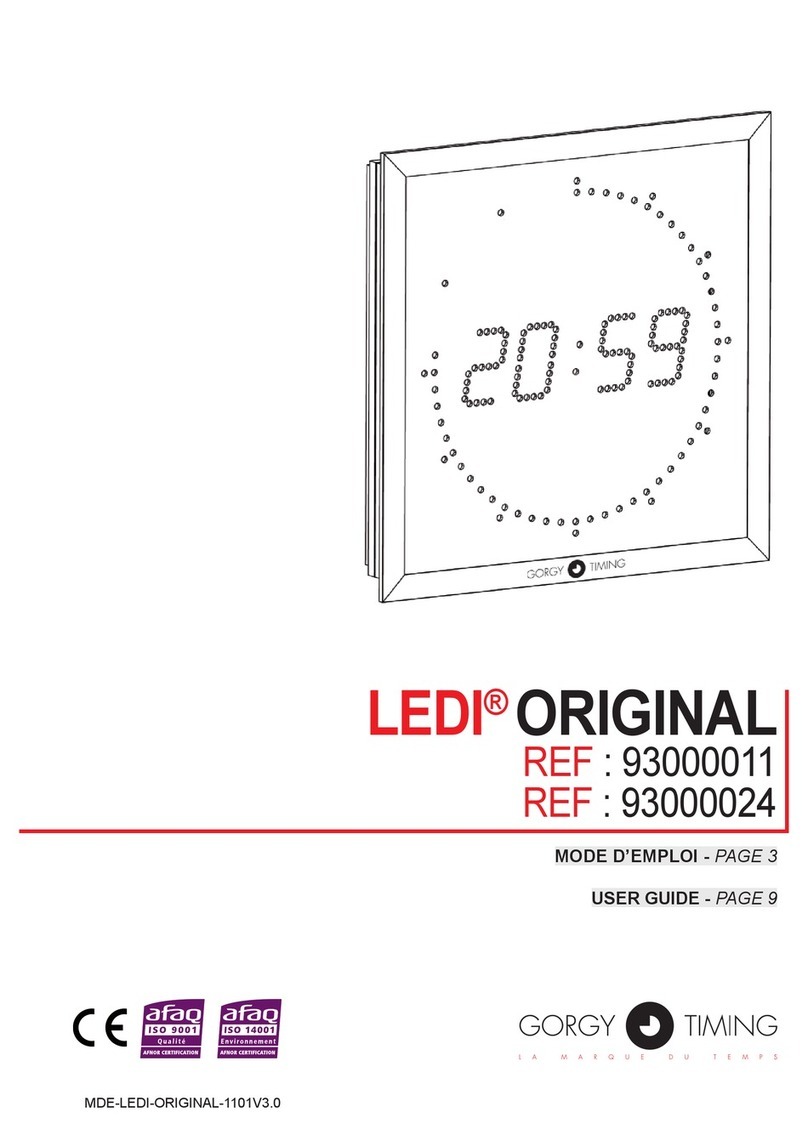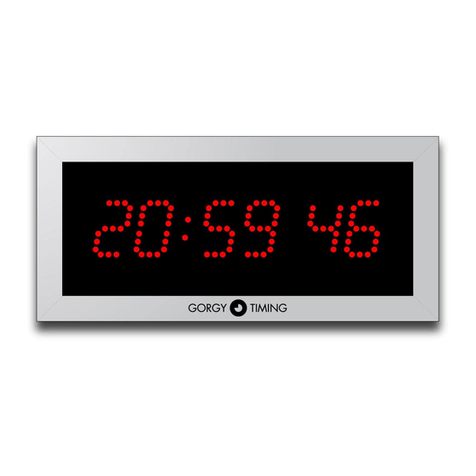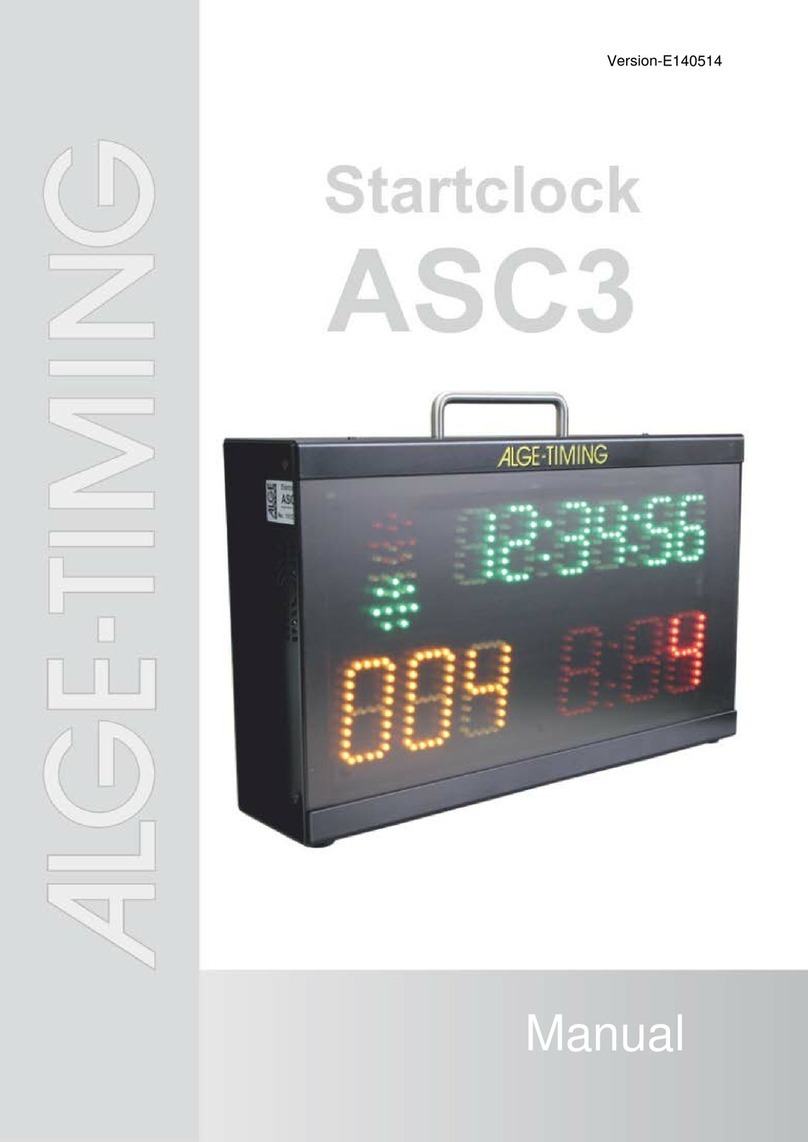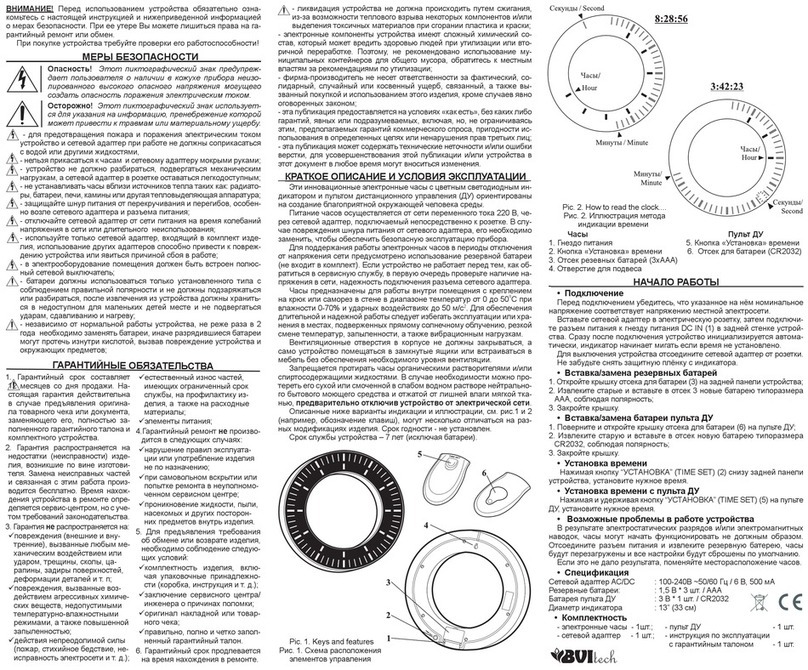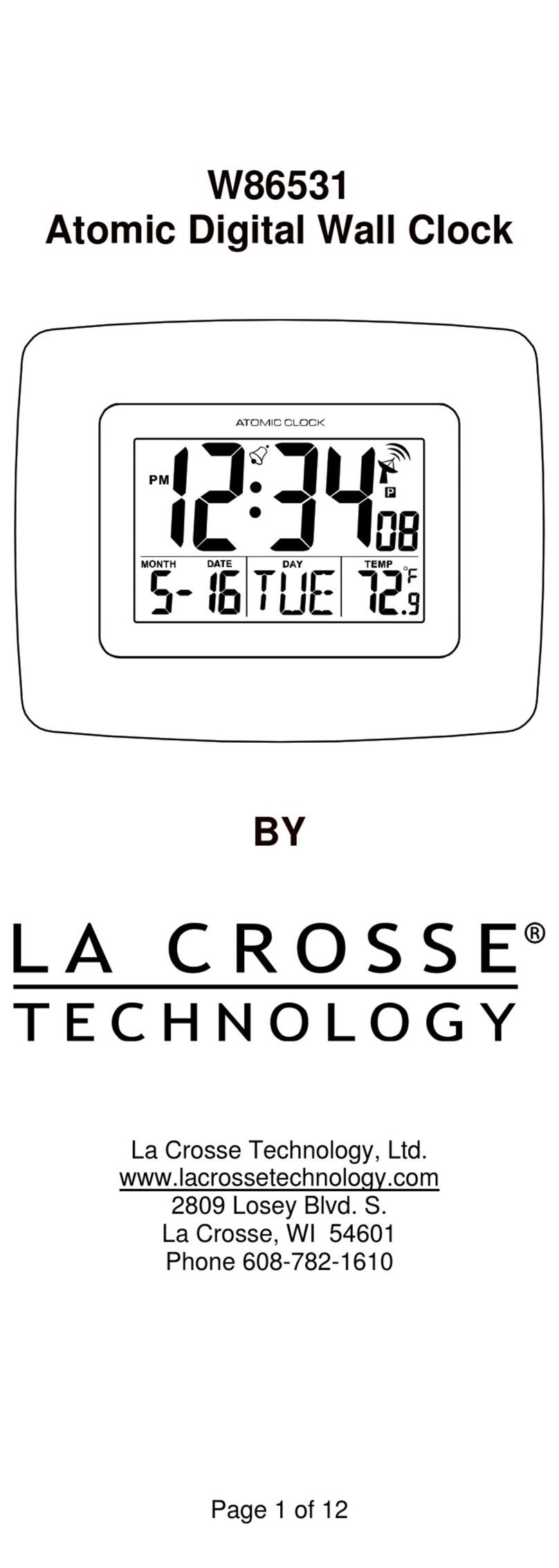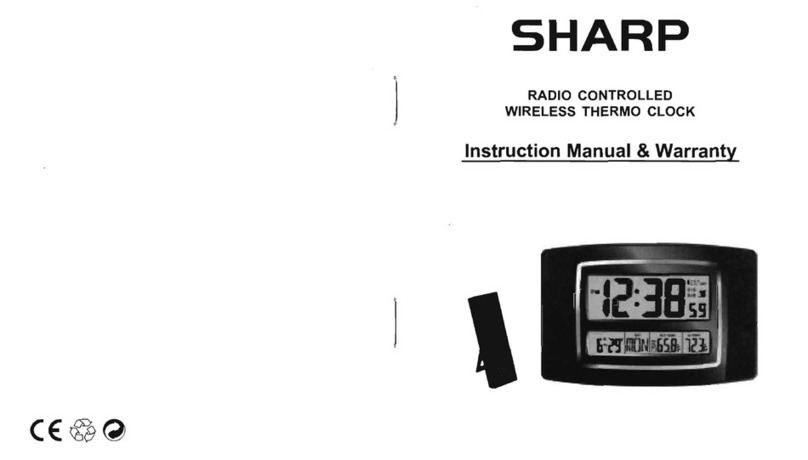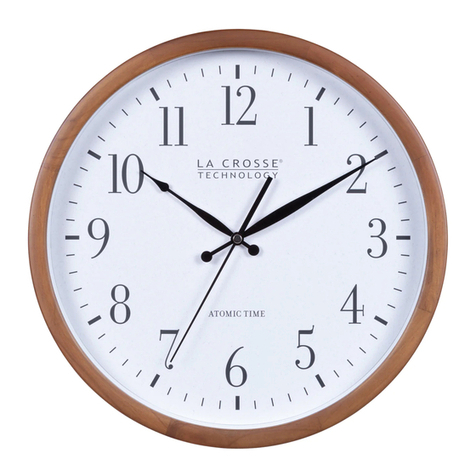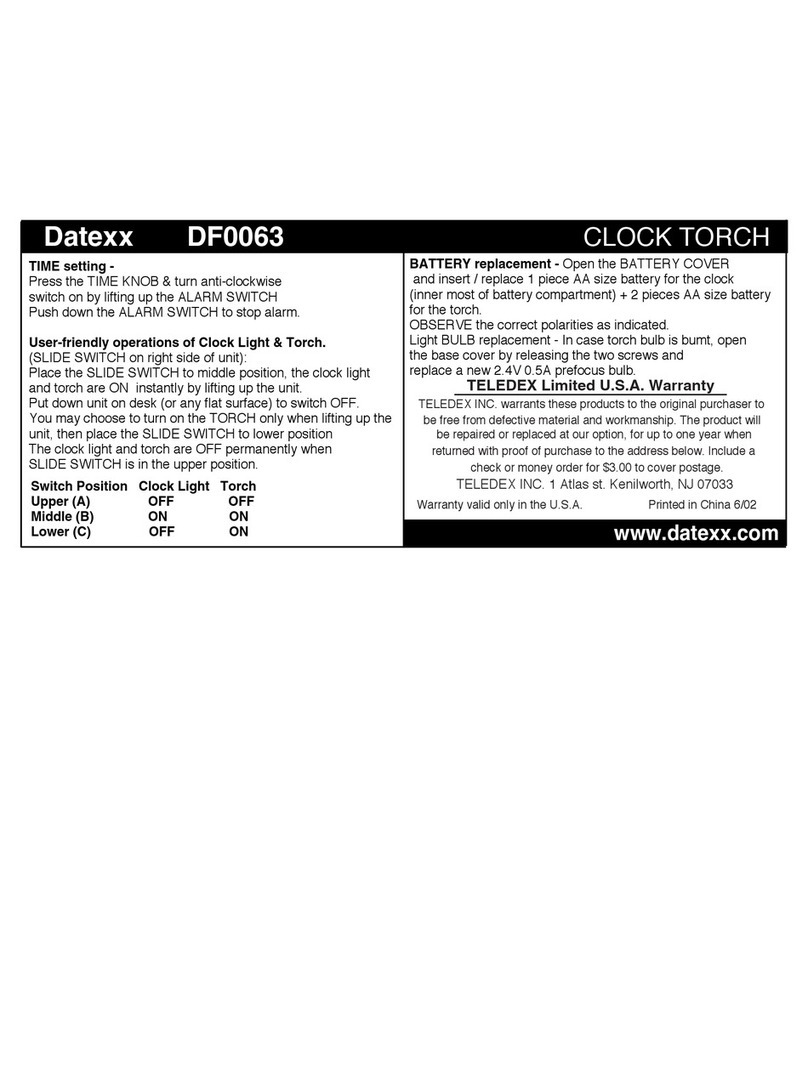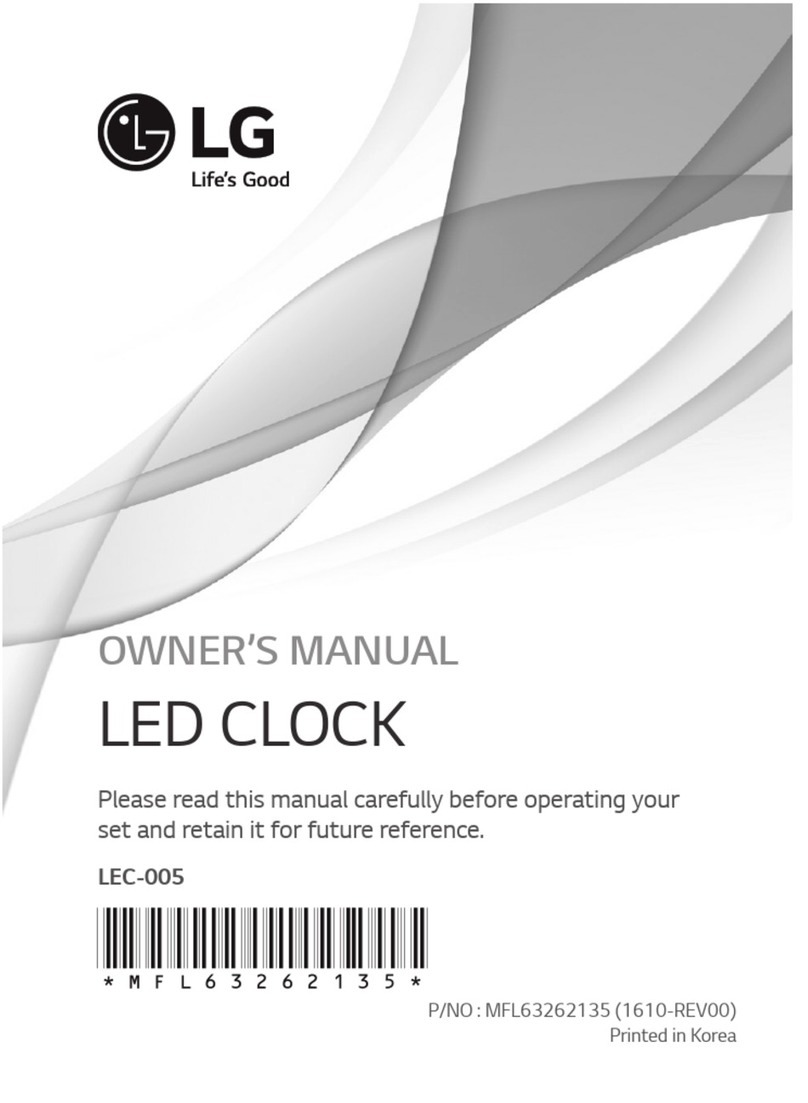
LEDI 6 – LEDI 6/S
7 /8
6.4.1 - Transmitter mode
In this mode, the clock transmits a code (configuration 2400 bauds, 8-bit format, even parity, 1 stop
bit) which has two parts:
1- time information in the form:
STX day of week SP day of month/month/year SP SP hour:minute:second CR
2 - status information (timer, temperature, brightness, etc.).
The first part of the information sequence serves, for example, to synchronise a computer (in this
case the second part is not taken into account).
The complete information sequence is used to control another clock.
6.4.2 - Receiver mode
In this mode, the clock works autonomously but is set with respect to the ASCII code that it receives
(configuration 2400 bauds, 8-bit format, even parity, 1 stop bit). This ASCII code may be either:
- time information in the form:
STX day of week SP day of month/month/year SP SP hour:minute:second CR
generated either by the RT3000 or RADIO TIMING ASCII or any other ASCII code generator,
- information from another clock of the same type working in transmitter mode; in this case, the clock
is completely slaved to the other.
6.4.3 - Two-directional mode
In this mode the ASCII coded time message is transmitted after reception of a recognition character
("D") (configuration 2400 bauds, 8-bit format, even parity, 1 stop bit).
Message transmitted:
STX hundredth of second SP day of week SP day of month/month/year SP SP
hour:minute:second CR
e.g. 76 FRI 03/02/90 15:14:45
which means that the second corresponding to this message is 76 hundredths of a second over when
the character "D" is received.
N.B.: - In the case of the LEDI 6 (indicating only hour and minute information), the date information
is replaced by zeros and the day of the week in alphanumeric characters by three spaces. However,
if this clock is an AFNOR NFS 87-500 receiver or is radio-synchronised, the date information is
generated.
If there is a mains cut, the display goes out but the clock continues to run on its internal battery (the
hour pips and ASCII output are no longer generated).
- For ASCII code receiver clocks, if the incoming message is not in the correct configuration, it
may be necessary to set the clock manually. As soon as the ASCII message is received, the clock
compensates for any difference with the reference time.
